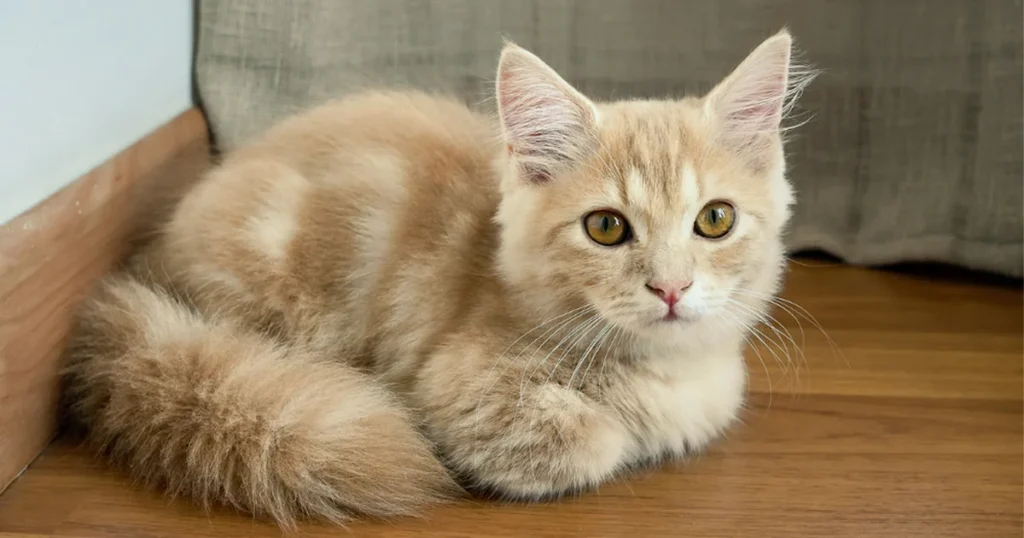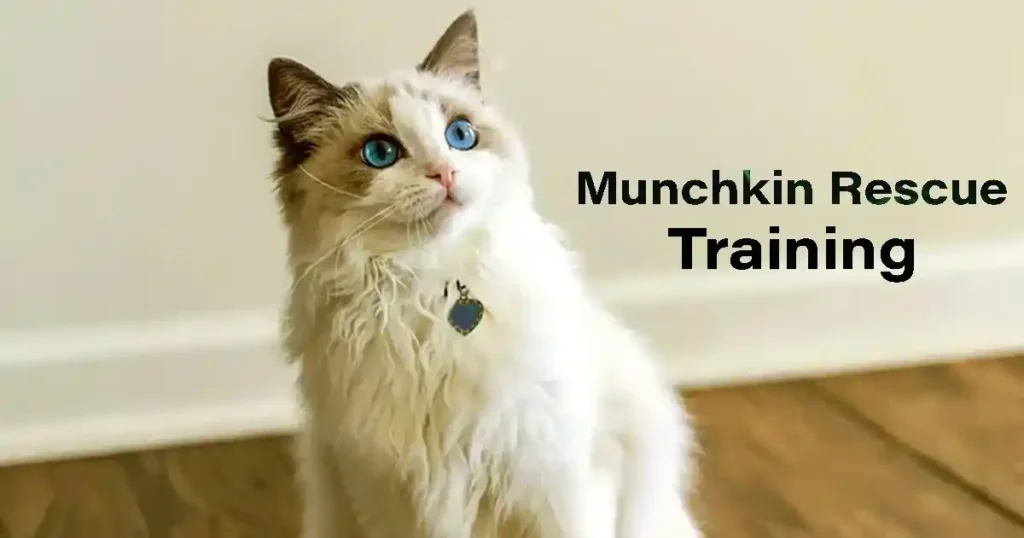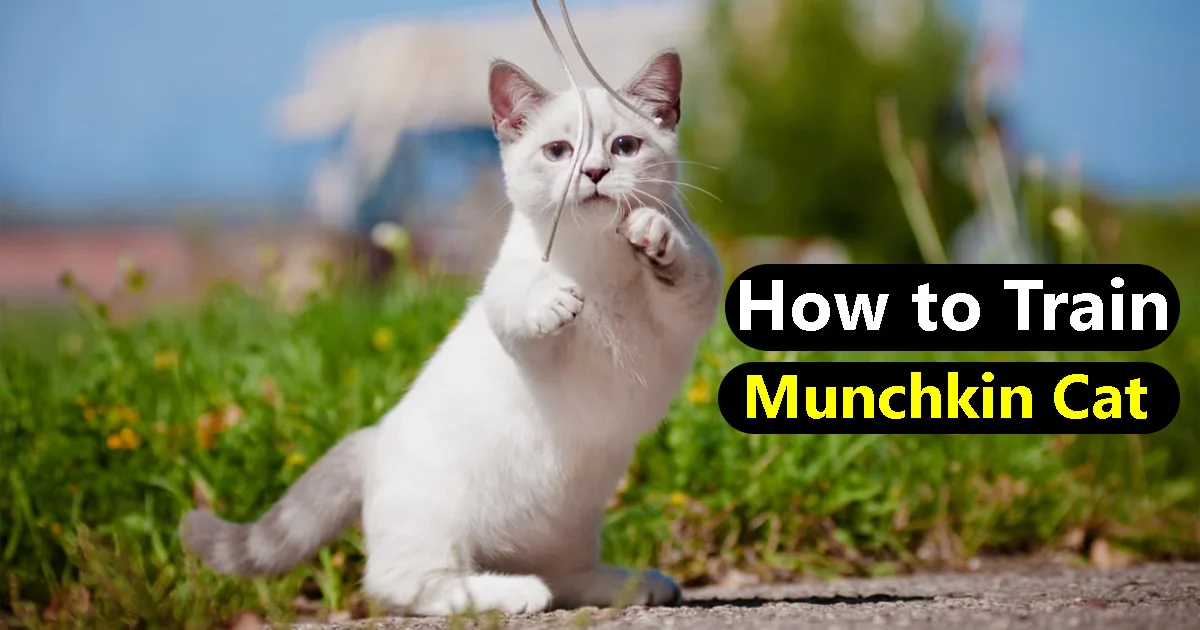Rescue training for Ragdoll cats involves a patient and compassionate approach to help them adjust to their new environment and build trust with their new family. Start by creating a calm and secure space where the cat can retreat and feel safe. Establish a routine that includes regular feeding times and gentle interaction to help them acclimate.
Munchkin Rescue Training involves learning the skills and knowledge necessary for caring for Munchkin cats, which covers their breed-specific traits, health care needs, and overall handling. It’s essential to understand their unique characteristics and requirements to ensure their well-being.
Engage in gentle handling and play sessions to help them overcome fears and build confidence. It’s crucial to be patient and understanding, as rescue cats may have varying levels of socialization and past trauma. Consistent positive experiences will foster trust and help them integrate smoothly into their new home. Remember that each cat is unique, so tailor your approach to their individual needs and progress at a pace that suits them.
Munchkin Cat Rescue Training: Step-by-Step Guide Beginnings
Training a Munchkin cat from a rescue situation requires patience, consistency, and understanding of their unique needs. Start by creating a calm, secure environment where the cat feels safe, as rescue cats may have experienced trauma or uncertainty. Begin with basic litter box training by placing the cat in the litter box after meals or naps and rewarding them when they use it correctly.
Introduce them slowly to the house, one room at a time, to prevent overwhelming them. Use positive reinforcement such as treats, praise, or playtime to encourage desirable behaviors like using scratching posts or following commands. Socialize them gradually with new people or pets, taking care to let the cat set their pace. Keep training sessions short and fun, using toys or treats to keep them engaged. Above all, be patient, as rescue cats may need time to adjust to their new surroundings and build trust.
With consistent care and gentle training, Munchkin rescue cats can adapt to their new home and thrive as loving companions. This guide focuses on effective methods to train and rehabilitate a rescued Munchkin cat, ensuring they feel safe, confident, and loved.
Tips for Successful Munchkin Rescue Training
Here are some helpful tips for successful Munchkin rescue training:
- Create a Safe Space: Start by giving your Munchkin rescue a quiet, comfortable space where they can feel secure. This helps them adjust to their new environment without feeling overwhelmed.
- Be Patient: Rescue cats, especially those with past trauma, may take time to trust you. Approach them calmly and avoid rushing interactions. Let them come to you on their own terms.
- Establish a Routine: Cats thrive on routine, so establish feeding, playtime, and grooming schedules. Consistent routines help them feel more secure and confident in their new home.
- Use Positive Reinforcement: Reward good behavior with treats, praise, or affection to reinforce what you want them to do. This encourages repetition of positive behaviors.
- Litter Box Training: Show them where the litter box is, and place them in it after meals or naps. Reward them for using it, and be patient if it takes time to get them fully trained.
- Gradual Socialization: Slowly introduce them to new people, pets, and environments to build their confidence. Keep encounters positive and controlled, allowing the cat to adjust at their own pace.
- Keep Training Sessions Short: Munchkin cats have a playful, curious nature, but they also have short attention spans. Keep training sessions brief and engaging to avoid frustration.
- Provide Mental and Physical Stimulation: Use interactive toys or puzzle feeders to keep them mentally and physically active. Playtime also strengthens the bond between you and your cat.
- Avoid Negative Reinforcement: Never punish a rescue cat for unwanted behaviors. Instead, redirect undesirable actions to something positive and reward them for appropriate behavior.
- Build Trust Gradually: Rescue cats may have trust issues, so build a relationship with your Munchkin by being gentle, consistent, and non-threatening. Let them feel in control of interactions whenever possible.
By following these tips with patience and compassion, you can help your Munchkin rescue adjust to their new home and become a happy, well-behaved companion.
Building Confidence in Rescue Ragdoll Cats
Building confidence in rescue Ragdoll cats requires a gradual, patient approach focused on creating a safe and secure environment. Start by providing a quiet, comfortable space where they can retreat when feeling anxious, allowing them to explore their surroundings at their own pace. Establish a predictable routine with feeding, playtime and grooming to give them a sense of stability and control.
Use positive reinforcement, such as treats, praise and affection, to reward brave or positive behaviors, helping them associate new experiences with rewards. Avoid forcing interactions; instead, allow the cat to come to you when ready, offering gentle petting and calm communication to foster trust.
Tailor Your Approach
Each cat is unique, with individual needs shaped by their past experiences. It’s essential to observe your new feline friend closely to understand their comfort levels and preferences. Some cats may take longer to adjust to new environments, while others might show curiosity right away.
Adapt your interactions based on their reactions, and don’t rush the process. Allowing them to set the pace will foster trust and make them feel secure in their new home.
Foster Trust Through Positive Experiences
Fostering trust through positive experiences is key to building a strong bond with any cat, especially rescue or timid ones. Start by creating a calm and predictable environment where the cat feels safe and secure. Avoid sudden movements or loud noises that could startle them, and allow them to approach you at their own pace.
Use gentle, soothing tones when speaking to them and never force interactions; let the cat come to you when they’re ready. Positive reinforcement plays a crucial role reward them with treats, praise, or affection when they show interest in interacting or exhibit positive behaviors. Gradually introduce them to new experiences, people and pets in a controlled manner, rewarding them for handling these situations calmly.
Consistent playtime with interactive toys can help them feel more comfortable and confident while reinforcing your bond. Always remember, trust is built over time, and by creating positive, rewarding experiences, the cat will learn to associate you and their environment with safety and comfort.
Munchkin Rescue training
Training a Munchkin cat rescue requires a thoughtful approach to address their unique needs and help them transition into a loving home. Munchkin cats, known for their short legs and playful personalities, may come with various backgrounds and experiences that affect their behavior.
Here’s a comprehensive guide to Munchkin rescue training to ensure a smooth adjustment and successful integration into their new environment. Breed rescue organizations such as the Fanciers Breeder Referral List are dedicated to caring for homeless Munchkin cats.
When adopting, it’s crucial to ask key questions about the cat’s energy level, behavior, health issues, and more. Additionally, grooming a Munchkin cat involves regular sessions, including brushing and nail trimming, to prevent matting and maintain their health.
| Aspect | Details |
|---|---|
| Training | Munchkin cats are highly intelligent and respond well to positive reinforcement techniques like praise and treats. |
| Socialization | Vital for Munchkin cats as they are social creatures needing interaction, toys, playtime, and access to scratching posts. |
| Breed Characteristics | |
| Physical Traits | Known for their short legs due to a genetic mutation. They have a normal-sized body and come in various colors and patterns. |
| Health Concerns | Prone to issues such as lordosis (spinal condition) and pectus excavatum (chest deformity). Regular veterinary care is essential. |
| Behavioral Traits | |
| Temperament | Typically playful, social, and affectionate. |
| Mobility | Despite short legs, they are quite agile and can run and jump well. |
| Adoption Considerations | Research reputable breeders or rescue organizations prioritizing the cat’s health and well-being. |
Rescue Training Essentials
Understanding the dietary needs of cats, including high-quality cat food and fresh water. Regular check-ups, vaccinations, and understanding signs of illness. Techniques for safely picking up and handling cats to avoid injury to both the cat and the handler.
Using appropriate carriers, minimizing stress during transportation.When adopting, ask key questions about the cat’s energy level, behavior with other animals, personality, health issues, and more. Remember to consult with a veterinarian soon after adoption to ensure the cat’s health and well-being.
Rescue Considerations
Munchkin cats may have mobility issues and require extra care due to their short legs and potential health problems like arthritis. Consider adopting from a shelter to provide a loving home for a Munchkin cat in need.
| Aspect | Description |
|---|---|
| Rescue | Adopt a Munchkin cat from a shelter to provide a loving home. |
| Mobility | Be mindful of potential mobility issues due to short legs and arthritis. |
| Training Age | Start training young Munchkin cats for better results. |
Specific Training Modules
Techniques for locating and safely capturing stray or abandoned Munchkin cats. Setting up and managing a shelter environment that caters to the specific needs of Munchkin cats.
| Category | Details |
|---|---|
| Behavioral Assessment | Assess the temperament and needs of rescued cats to understand their behavior and requirements. |
| Socialization | Use techniques to help socialize scared or feral cats, making them more comfortable and adoptable. |
| Screening Potential Adopters | Ensure that potential adopters are a good match for the cat and understand its specific needs. |
| Follow-Up Support | Provide ongoing support and advice to adopters to ensure successful transitions and address any issues. |
Training Tips
Munchkin cats can be trained, especially when started young, due to their intelligence and confidence. Use positive reinforcement methods for training, as harsh methods can be detrimental to sensitive breeds like the Munchkin. Socialize your cat to new situations and environments to help them adapt better.
Encourage exercise through play, cat towers, and even leash walking to keep them fit and healthy.

Health Concerns
Be aware of potential health issues like Progressive Retinal Atrophy (PRA) in Munchkin cats. Regular veterinary check-ups, vaccinations, and proper care are crucial for maintaining their well-being.
| Aspect | Description |
|---|---|
| Veterinary Care | Schedule regular check-ups, vaccinations, and proper care to maintain your cat’s health. |
| Potential Health Issues | Be aware of potential health problems like Progressive Retinal Atrophy (PRA) in Munchkin cats. |
Feeding and Nutrition
Proper nutrition is vital for the health and vitality of Munchkin cats, especially those who have been rescued. A balanced diet tailored to their needs can support their recovery and overall well-being. Rescued Munchkin cats may require extra patience and understanding as they adjust to their new surroundings.
Socialization efforts and behavioral training can help them feel more comfortable and confident. Regular veterinary check-ups are essential for monitoring the health of rescued Munchkin cats. Vaccinations, parasite control, and prompt treatment of any medical issues are crucial for their long-term welfare.
Finding the Right Home
Finding the perfect forever home for a rescued Munchkin cat involves careful screening and matching. It’s essential to consider factors such as lifestyle experience and compatibility with other pets. Building a strong bond with a rescued Munchkin cat takes time and patience. By providing love attention and positive reinforcement, owners can help their feline companions feel safe and secure.
Ongoing Support and Resources
Support networks and resources are invaluable for Munchkin cat owners, especially those who have adopted rescues. From online forums to local rescue organizations, there are plenty of avenues for assistance and advice. Every successful adoption of a rescued Munchkin cat is a cause for celebration. Hearing heartwarming stories of transformation and happiness reminds us of the importance of rescue and rehabilitation efforts.
What are some common challenges in rescuing Munchkin cats?
Munchkin cats are often overlooked for adoption compared to other breeds. The RSPCA has revealed that Persian cats, which are a flat-faced breed like Munchkins, are among the most commonly overlooked pets in rescue centers.
How can I help a rescued Munchkin cat adjust to its new home?
Provide a quiet, secluded area where the cat can feel safe and secure as it adjusts to its new surroundings. This could be a separate room with food, water, litter box, and comfortable bedding.
What should I feed a rescued Munchkin cat?
Munchkin cats are carnivorous and require a diet rich in proteins. Their diet should be low in cereals and other inadequate ingredients for cats. Their food should be adapted to their stage of development and not exceed in quantities, as they can easily gain weight.
How can I find reputable rescue organizations for Munchkin cats?
Finding reputable rescue organizations for Munchkin cats can be challenging, as they may not be as common as rescues for more traditional cat breeds.
conclusion
Munchkin cats are charming and unique due to their short legs and elongated bodies, which result from a spontaneous genetic mutation. While they are generally playful and affectionate, they may face specific health issues and sometimes require rescue and rehabilitation.





